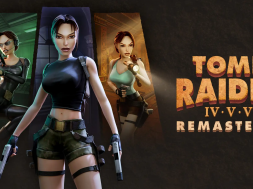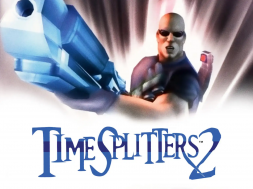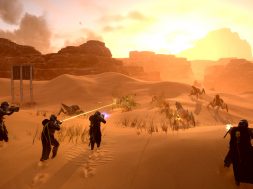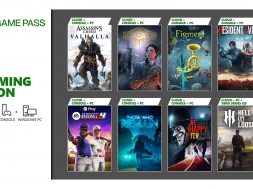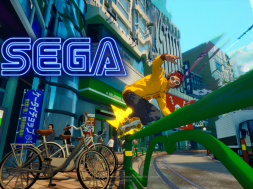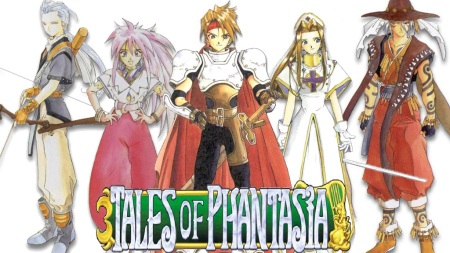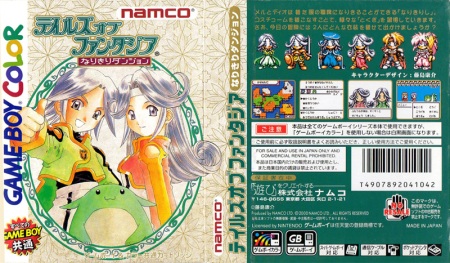
With Tales of Xillia on course for it’s European release this August, there is no better time to journey backwards and examine one of the most beloved gaming franchises in the history of RPG games. While often overshadowed by larger titles, the Tales Of series has lasted the test of time, this iconic and enduring franchise has spanned almost two decades, over thirty games and four anime adaptations. It’s a substantial legacy, and one I am going to guide you through, from it’s 16-bit roots up to the modern day. This series is notable in many ways, it was one of the first JRPGS to use a real time action based combat called “The Linear Motion Battle System” (instead the typical turn based games of the time); Also noteworthy were Characters using their unique skills in combos with each other, earning interesting titles and of-course the skits!
So take a seat for a while and let me tell you a tale of many Tales…
Tales of Phantasia
Tales of Phantasia was the game that started it all! Created by Team Wolf in 1995, some of whose members went on to form Tri-Ace and create the amazing Star Ocean. Tales of Phantasia is notable in many ways, it was the first Famicom (SNES) game to use a 48MB cartridge ( a special new cartridge with larger Memory capacity ) because Tales of Phantasia required a greater hardware capacity to run. This is due to the large amount of sprites and voice work, yes voice work in a 1995 SNES game! In fact, Tales of Phantasia was actually larger in terms of memory than some N64 games.
Tales of Phantasia features the Linear Motion Battle System. LMBS is a real time battle system where you control one character and the rest of your party is AI controlled. You can configure their behaviour and combine your attacks into devastating combos, all on a 2D side scrolling plane. This is the basic core system that was built upon and refined over the years, and it’s a fun and robust system, even playing it today you can see where the seeds of everything took root.
The story of Tales of Phantasia starts out like many others, tragedy strikes our main character Cress, who lives in a small village and he sets out on an adventure. But from there you meet lots of colourful characters such as his Chester Cress home town friend, or Arche the Half-elf, broomstick flying, magic user.
The game was extremely successful, the impressive technical achievements ( made possible by the ingenuity and creativity of Team Wolf ) lead to a visual and audio experience on the SNES that was never before possible. Combined with the great game play, mechanics, and immersive story, Tales of Phantasia was the start of something great; and is to this day many peoples most fondly remembered game of the time.
Tales of Phantasia finally received an official English release in 2006 but featured many ports along the way. Originally appeared on the Famicom in Japan in 1995, in 1998 it was remade for the playstation ( a Japan only release ) that ran on an enhanced Tales of Destiny engine. It featured new voice acting, new anime footage, new moves and a new playable character. In 2003 it was released in GBA which was ambitious . . . A game too powerful for the Famicom, which was remade for the PS1 and then tried to port that version to the game boy. While the game is still good it just pushed the Gameboy’s hardware past it’s limits, resulted in laggy and stuttering combat. It was also ported to the PSP in 2006 based largely on the ps1 version with an even larger voice cast. Finally it was also adapted into a four part anime, Tales of Phantasia the Animation and was released from 2004 to 2006. It is pretty much a straight retelling of the games story, check it out of you can.
T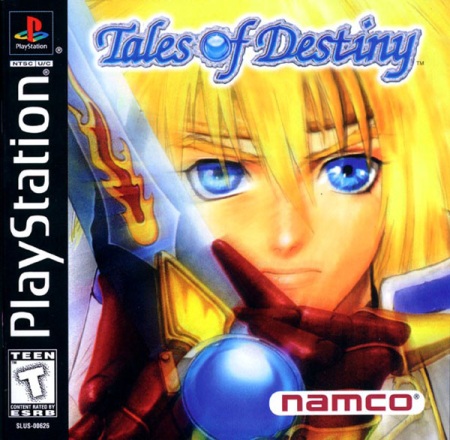 ales of Destiny
ales of Destiny
After the success of Tales of Phantasia another Tales game was sure to follow and this was Tales of Destiny. First released in Japan on the PS1 in December 1997 and receiving an American release in September 1998 it was never released in PAL Regions. After Tales of Phantasia, Team Wolf split into two groups one was bought by Namco and became Namco Tales Studios. Using a new engine to take advantage of the Playstation’s power over the Famicom Tales of Destiny features a smoother faster game.
This game follows Stahn, a simple boy from the country who stows away on an airship, he then finds a magic talking sword, Dymlos an ancient Swordian from the Aeth’er Wars. Armed with Dymlos, Stahn sets out on adventures to find the other Swordians and their wielders to gather them together in a battle for an ancient relic and to save the world.
The combat system is still the LMBS just a more polished version, while staying true to its solid core of gameplay combining this with an amazing story and colourful characters that lead to selling over a million copies worldwide on initial release. Well over double Tales of Phantasia, Tales of Destiny is following on the success of the JRPG craze of the early 90’s Tales of Destiny has firmly taken its place as many people’s favorite PS1 game and it’s a great solid game all around.
Tales of Destiny received a Japan only PS2 version featuring hyper detailed sprites and fully voiced dialogue, along with some gameplay balances, a director’s cut was also released featuring a second campaign from Leon’s point of view.
Tales of Phantasia: Narikiri Dungeon
Next to be released in the franchise was Tales of Phantasia: Narikiri Dungeon. The first game in the franchise not to be developed by Team Wolf, none of the Narikiri games have been been realised in English so I haven’t had the pleasure of playing them ( so this section might be a little brief) . But darn it, I said I’d look at every every tales game released and that’s what I will do! Originally released on the Gameboy Color in November 2000, it was well received but nothing outstanding, being released just 20 days after Tales of Destiny might have overshadowed it slightly. The battle system is a stripped down combination of real time but turn based combat. Unlike the LMBS combat in the rest if the main series. The game follows the story of twin children who go on adventures and have some minor interactions with the cast of the main game. The game did receive a Japan only PSP remake Tales of Phantasia: Narikiri X in 2010, that greatly improved the game mechanics and graphics and well received.
Part I concludes here but the next installment will be live soon where we are kicking things off with ‘Tales of Eternia’!



